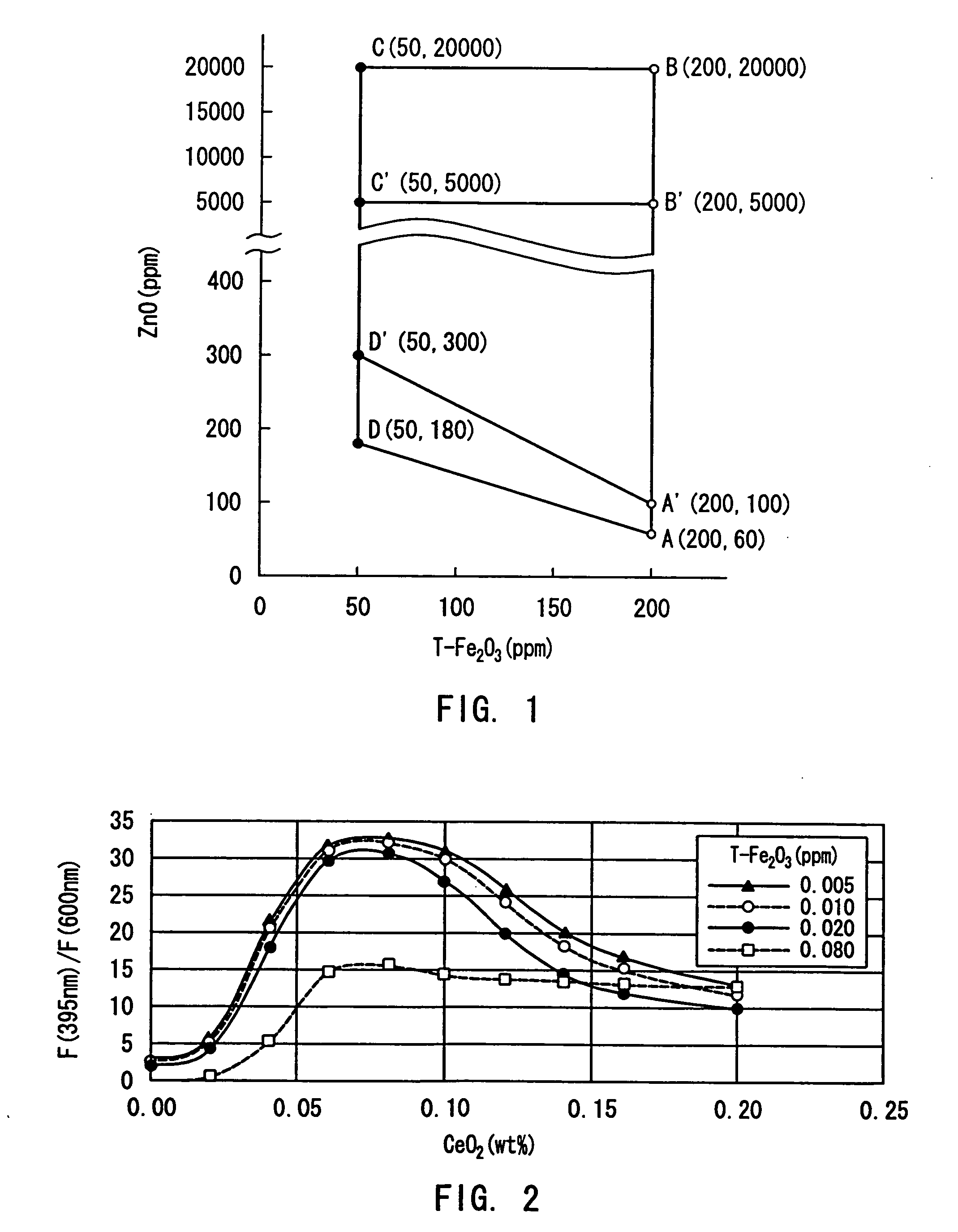High transmittance glass sheet and method of manufacturing the same
a technology of transmittance glass and transmittance, which is applied in the direction of glass rolling apparatus, glass tempering apparatus, manufacturing tools, etc., can solve the problems of micro cracks in the vicinity of nis particles, difficult to detect nis particles on production lines, and spontaneous fracture of tempered glass
- Summary
- Abstract
- Description
- Claims
- Application Information
AI Technical Summary
Benefits of technology
Problems solved by technology
Method used
Image
Examples
Embodiment Construction
[0053] With respect to soda-lime-silica glass in which Ni metal is contained intentionally, a relationship between the content of total iron oxide (in terms of Fe.sub.2O.sub.3) and the degree to which NiS is likely to be formed was examined. As can be seen from the results of the examination shown in FIG. 3, it was observed that NiS became more likely to be formed as the content of the total iron oxide was decreased from 0.20 wt. %, and in particular, the number of NiS particles formed increased steeply when the content of the total iron oxide was not more than 0.060 wt. %. Table 1 shows the respective values of the content of the total iron oxide, an amount of the Ni metal added, the number of the NiS particles formed, and the maximum diameter of the NiS particles that were used to obtain the results shown in FIG. 3. These results were obtained by using a crucible having a capacity of 250 cm.sup.3. Also in actual melting and forming operations of soda-lime-silica glass using a tank...
PUM
| Property | Measurement | Unit |
|---|---|---|
| transmittance | aaaaa | aaaaa |
| transmittance | aaaaa | aaaaa |
| transmittance | aaaaa | aaaaa |
Abstract
Description
Claims
Application Information
 Login to View More
Login to View More - R&D
- Intellectual Property
- Life Sciences
- Materials
- Tech Scout
- Unparalleled Data Quality
- Higher Quality Content
- 60% Fewer Hallucinations
Browse by: Latest US Patents, China's latest patents, Technical Efficacy Thesaurus, Application Domain, Technology Topic, Popular Technical Reports.
© 2025 PatSnap. All rights reserved.Legal|Privacy policy|Modern Slavery Act Transparency Statement|Sitemap|About US| Contact US: help@patsnap.com



